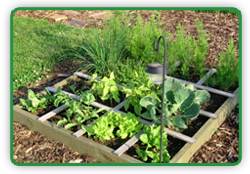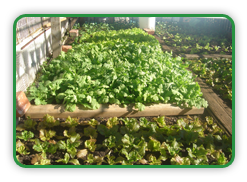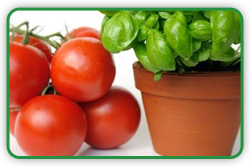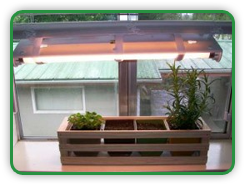|
Home > Guides > Urban Gardening > Survival Gardening Guide > Indoor Survival Gardening Guide |
|
Indoor Survival Gardening Guide |
Urban  Suburban Suburban  Indoor Indoor  Balcony Balcony  City City |
The last few decades have seen unprecedented interest in farming and gardening techniques centered around self-sufficiency and survival. The organic foods movement, and other recent trends, reflect an increasing interest in the quality and growing conditions of the food we depend on. Whether motivated by necessity, or by a desire to create the highest quality possible food, many people are responding with creative, space-saving techniques to promote their own self-sufficiency.
|
 |
|
|
| |
|
|
| |
|
|
| |
Survival Gardening Guide
GROWING NOTES
 The challenges to self-sufficiency are considerable. By one estimate, the average person requires more than 450 pounds of vegetables, 365 pounds of fruit, 250 pounds of grains, and 150 pounds of meat or similar source of protein. Such quantities present a significant challenge to the vast majority of growers. In addition to the physical resources necessary for such an endeavor, growing on such a scale requires considerable know-how. Becoming self-sufficient is likely to be a gradual process of careful observation and execution. Such a movement will likely require several years of diligent persistence, gradually taking on more and more along the path to independence. The challenges to self-sufficiency are considerable. By one estimate, the average person requires more than 450 pounds of vegetables, 365 pounds of fruit, 250 pounds of grains, and 150 pounds of meat or similar source of protein. Such quantities present a significant challenge to the vast majority of growers. In addition to the physical resources necessary for such an endeavor, growing on such a scale requires considerable know-how. Becoming self-sufficient is likely to be a gradual process of careful observation and execution. Such a movement will likely require several years of diligent persistence, gradually taking on more and more along the path to independence.
Establishing self-sufficiency, whether in an urban or rural setting, is undoubtedly enhanced by cooperation and creativity. Forming relationships and trading with other growers is one way to maximize yields. From an efficiency perspective, it makes more sense to focus on just a few crops rather than the wide array encompassed in a typical diet. By focusing on fewer crops and establishing communication with other growers in your area, cross-pollination can also be minimized to help ensure varietal integrity from saved seed.
|
| |
|
|
|
| |
|
|
|
|
 Growing a sizable yield of fruits and vegetables indoors is likely to present a significant challenge to most growers. Generally crops require five or more hours of sunlight daily. Windows oriented toward south will receive the most light, followed by those facing west or east, depending on specific location. If resources allow, yields can be significantly improved by supplementing with artificial lighting. Growing a sizable yield of fruits and vegetables indoors is likely to present a significant challenge to most growers. Generally crops require five or more hours of sunlight daily. Windows oriented toward south will receive the most light, followed by those facing west or east, depending on specific location. If resources allow, yields can be significantly improved by supplementing with artificial lighting.
 Choose carefully when selecting lights for indoor growing. Florescent and incandescent type bulbs lack the diverse spectrum of light needed for plant growth, and do not make ideal choices as the primary source. Metal halide type lamps do a better job of simulating the diverse spectrum of light delivered by the sun, and will likely require a considerable input of financial resources and planning. These lights can be researched and obtained online, or at garden, hydroponic and other specialty stores. Additionally, the energy costs of maintaining such systems each month may be significant and should be taken into account when planning. Indoor lighting may also present safety risks which should carefully be addressed by keeping lights away from flammable materials, and by employing an balast or similar device to manage increased electrical current. Choose carefully when selecting lights for indoor growing. Florescent and incandescent type bulbs lack the diverse spectrum of light needed for plant growth, and do not make ideal choices as the primary source. Metal halide type lamps do a better job of simulating the diverse spectrum of light delivered by the sun, and will likely require a considerable input of financial resources and planning. These lights can be researched and obtained online, or at garden, hydroponic and other specialty stores. Additionally, the energy costs of maintaining such systems each month may be significant and should be taken into account when planning. Indoor lighting may also present safety risks which should carefully be addressed by keeping lights away from flammable materials, and by employing an balast or similar device to manage increased electrical current.
|
|